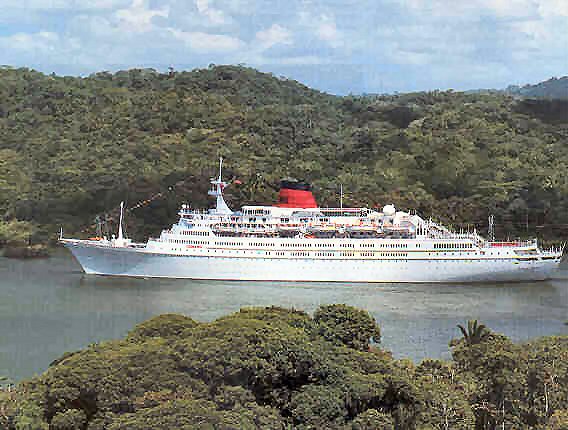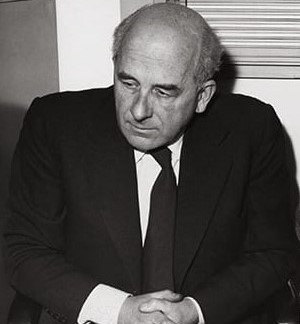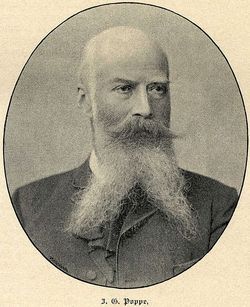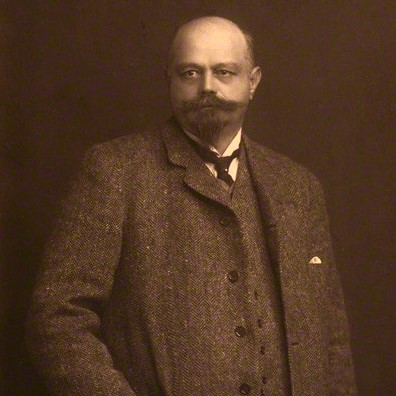On May15 of May 1972, a newbuilding for Det Norske Amerikalinje A/S of Oslo Norwegian America Line, laid down as yard number 39, was launched at the Swan Hunter Shipbuilders shipyard at Wallsend on Tyne, England. Swan Hunter was famous for having delivered a long list of great liners like for example the RMS Mauretania and th RMS Carpathia which rescued survivors from the RMS Titanic. However, as liner service was now in a steady decline, this vessel would be the last passenger ship to be built at the Tyne.
She was named Vistafjord, measured 24,290GRT and was powered by two Sulzer diesels which gave her a service speed of 20 knots. Norwegian America Line had seen passenger loads on liners across the North Atlantic dwindle so they decided to market her as a luxury cruise ship. The new ship certainly lived up to expectations, as onboard service was impeccable with almost 400 crewmembers looking after just 620 passengers. Her moderate size (her length was 191 metres, beam 25 metres and draft 8 metres), the homely atmosphere onboard and her warm and classically styled interior completed the picture.

After successful trials, she was delivered to Norwegian America Line May 15, 1973, one year after her launch to the day. A week later, Vistafjord sailed on her first voyage from Oslo to New York. Although this seemed to be a true liner voyage, Vistafjord was actually sailing in cruise service her entire career, and she was marketed as such. She immediately continued cruising world wide, quickly gaining an enviable reputation.
The company’s other vessel was her slightly smaller near-sister Sagafjord, built at the Forges et Chantiers de la Mediterrannee yards at La Seyne, France in 1964.
She was designed like a classic oceanliner with very conservative looks, a round forward superstructure, terraced after decks and the sheer contemporary vessels sadly miss.

May 1980, Norwegian America Line which had been in search of additional capital as it struggled to be profitable with the limited passenger capacity of their two-vessel-fleet and the growing competition in the luxury cruise market, was taken over by Leif Hoegh, a Norwegian shipping line known for their car-carriers. At first NAL and Leif Hoegh & Company A/S of Oslo worked in partnership but a few months later Leif Hoegh bought the entire line. As they had been active solely in the luxury cruise market with their Sagafjord and Vistafjord, they were rebranded as Norwegian America Cruises. But although their ships had a fiercely loyal clientele and an impeccable reputation, it was extremely difficult to turn a profit cruising with limited capacity luxury cruise ships attracting an older clientele. Other lines like Holland America, Chandris, Cunard and P&O found themselves in the same situation in the 1980’s.

So already three years later Leif Hoegh deicided to sell Norwegian America Cruises or look for a partner to merge with. There were reports of negotiations with Royal Viking Line, another 5-star Norwegian cruise line for a merger and continuing as Royal Viking Line. Vistafjord would be renamed Royal Viking Vista (and Sagafjord would continue sailing as Royal Viking Saga) . But no agreement was reached. Shortly thereafter Cunard Line showed interest and acquired the Norwegian American Cruises brand and both of its ships. Because of their great reputation in the luxury cruise market, Cunard retained the company’s name in their newly formed Cunard-NAC division as well as both ship’s names. Even the Norwegian crews remained. Now repainted with a black hull, as opposed to the dove-grey they wore previously and topped with the Cunard red and black funnel, they still were very impressive cruise liners. They were reflagged to the Bahama’s with Nassau as their homeport. Three years later in 1986, Vistafjord was now considered to be a true Cunard vessel and the Norwegian America name was discontinued.

Vistafjord sailed on cruise after cruise for Cunard for the next 15 years. During this period however, Cunard, owned by the Kvaerner Group from Norway, had run into difficulties as the line did not seem to have a firm business plan for the future. Its fleet consisted of very different (older) ships like the medium sized Cunard Princess and Cunard Countess, both small luxury yachts Sea Goddes I and II, the Cunard Crown Jewel, Monarch and Dynasty and Royal Viking Sun, quite an eclectic fleet. Kvaerner dedided to sell Cunard to the Carnival Corporation, which was expanding at a rapid pace at the time through an impressive series of takeovers. Carnival saw the potential of Cunard going back to its roots, owning large liner-like vessels with classic interiors and impeccable British-style service. So several ships were sold off, while others were shifted to other Carnival brands. In this new picture, there was only room for two classic ships, the QE2 and Vistafjord of course. Both had already become of age at the time, but they had a loyal following and many guests were repeat passengers.

To fully capitalize on Cunard’s rich history, Vistafjord was renamed Caronia in December 1999 after the company’s famous first dedicated luxury cruise ship (1947). No link whatsoever to Norwegian America Line was left now, because Vistafjord’s onetime running mate Sagafjord had already been taken out of service after she had suffered an engine fire while sailing in the South China Sea. After repairs had been made she was sold to UK cruise line Saga Cruises after a brief charter to Transocean Tours from Germany as Gripsholm. The renaming ceremony of Vistafjord took place in Liverpool at the Landing Stage near the former Cunard head-office in Liverpool, a historic building that still survives today.
Caronia was sold by Cunard in 2004, leaving Cunard with the QE2 and their new Queen Mary2 after having been in service for Cunard for 21 years. Although still a popular and revenue producing vessel, under the ownership of Carnival Corporation, Cunard Line decided to concentrate only on their much larger Queens. Considering her age, it was feared she would go for scrap, but luckily, just like the former Sagafjord, now Saga Rose, Saga Cruises acquired the Caronia and renamed her Saga Ruby, so now both former Norwegian America Line vessels were fleetmates once again. Saga Ruby was refitted and upgraded to the latest SOLAS requirements in Malta and now served the market for passengers over 50, which is the market Saga Cruises specializes in. Many of her former passengers were pleasantly surprised when it became clear that she had retained virtually all of her gorgeous classic interiors. Her capacity grew somewhat to 677 guests.


Her new pattern was sailing in European waters during the summer and shifting to the Caribbean in winter.
For almost a decade, from March 2005 until January 2014 Saga Ruby sailed for Saga Cruises, but sadly her age caught up with her. She had developed several technical issues like engine problems just before she would depart for her last world cruise and during her farewell voyage, her airconditioning system broke down, so her planned cruise to the Caribbean was altered to a Mediterranean cruise (the Mediterranean is somewhat less hot than the Caribbean which was considered to be more pleasant for her passengers when sailing without airconditioning ). Her near-sister Saga Rose had already been taken out of service in 2009 as it had proved to costly to upgrade her to comply to the 2010 SOLAS-requirements. She went for scrap in 2011.
Although it was feared that this would also be Saga Ruby’s fate now, she was unexpectedly acquired by a company from Malaysia, Millennium View for USD 14 mio. They had plans to use her in a stationary role as a hotel ship at Myanmar (Burma). After some superficial work had been carried out in Gibraltar she sailed for the Far East in February 2014 after having been renamed Oasia. She ended up in Tailand where she was finally laid up. For three years she remained in situ, slowly deteriorating. New furniture was btought for her planned staionary role, but nothing else happened. Her owners went bankrupt, and in March 2017 she quietly departed Thailand, registered at the Caribbean islands of St. Kitts & Nevis and with her name altered to Oasis, at first with Singapore as her destination but soon she was diverted to the feared beaches of Alang where one of the last strikingly handsome classic passenger ships was reduced to scrap.





